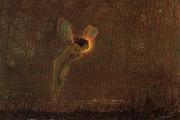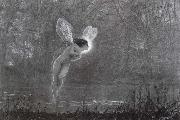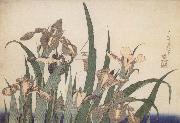Wholesale Oil Painting No Minimum |
|||||||||||
|
|
|||||||||||

|
|||||||||||
|
|
|
||||||||
Atkinson GrimshawBritish 1836-1893 Atkinson Grimshaw Gallery Grimshaw's primary influence was the Pre-Raphaelites. True to the Pre-Raphaelite style, he put forth landscapes of accurate color and lighting, and vivid detail. He often painted landscapes that typified seasons or a type of weather; city and suburban street scenes and moonlit views of the docks in London, Leeds, Liverpool, and Glasgow also figured largely in his art. By applying his skill in lighting effects, and unusually careful attention to detail, he was often capable of intricately describing a scene, while strongly conveying its mood. His "paintings of dampened gas-lit streets and misty waterfronts conveyed an eerie warmth as well as alienation in the urban scene." Dulce Domum (1855), on whose reverse Grimshaw wrote, "mostly painted under great difficulties," captures the music portrayed in the piano player, entices the eye to meander through the richly decorated room, and to consider the still and silent young lady who is meanwhile listening. Grimshaw painted more interior scenes, especially in the 1870s, when he worked until the influence of James Tissot and the Aesthetic Movement. On Hampstead Hill is considered one of Grimshaw's finest, exemplifying his skill with a variety of light sources, in capturing the mood of the passing of twilight into the onset of night. In his later career this use of twilight, and urban scenes under yellow light were highly popular, especially with his middle-class patrons. His later work included imagined scenes from the Greek and Roman empires, and he also painted literary subjects from Longfellow and Tennyson ?? pictures including Elaine and The Lady of Shalott. (Grimshaw named all of his children after characters in Tennyson's poems.) In the 1880s, Grimshaw maintained a London studio in Chelsea, not far from the comparable facility of James Abbott McNeill Whistler. After visiting Grimshaw, Whistler remarked that "I considered myself the inventor of Nocturnes until I saw Grimmy's moonlit pictures."[9] Unlike Whistler's Impressionistic night scenes, however, Grimshaw worked in a realistic vein: "sharply focused, almost photographic," his pictures innovated in applying the tradition of rural moonlight images to the Victorian city, recording "the rain and mist, the puddles and smoky fog of late Victorian industrial England with great poetry." Some artists of Grimshaw's period, both famous and obscure, generated rich documentary records; Vincent Van Gogh and James Smetham are good examples. Others, like Edward Pritchett, left nothing. Grimshaw left behind him no letters, journals, or papers; scholars and critics have little material on which to base their understanding of his life and career. Grimshaw died 13 October 1893, and is buried in Woodhouse cemetery, Leeds. His reputation rested, and his legacy is probably based on, his townscapes. The second half of the twentieth century saw a major revival of interest in Grimshaw's work, with several important exhibits of his canon. |
||||||||
|
|
||||||||
Iris
Iris Painting ID:: 1850 |
1886
Oil on canvas
31.89 x 48.03 in
1886 Oil on canvas 31.89 x 48.03 in |
|||||||
|
|
||||||||
Atkinson GrimshawBritish 1836-1893 Atkinson Grimshaw Gallery Grimshaw's primary influence was the Pre-Raphaelites. True to the Pre-Raphaelite style, he put forth landscapes of accurate color and lighting, and vivid detail. He often painted landscapes that typified seasons or a type of weather; city and suburban street scenes and moonlit views of the docks in London, Leeds, Liverpool, and Glasgow also figured largely in his art. By applying his skill in lighting effects, and unusually careful attention to detail, he was often capable of intricately describing a scene, while strongly conveying its mood. His "paintings of dampened gas-lit streets and misty waterfronts conveyed an eerie warmth as well as alienation in the urban scene." Dulce Domum (1855), on whose reverse Grimshaw wrote, "mostly painted under great difficulties," captures the music portrayed in the piano player, entices the eye to meander through the richly decorated room, and to consider the still and silent young lady who is meanwhile listening. Grimshaw painted more interior scenes, especially in the 1870s, when he worked until the influence of James Tissot and the Aesthetic Movement. On Hampstead Hill is considered one of Grimshaw's finest, exemplifying his skill with a variety of light sources, in capturing the mood of the passing of twilight into the onset of night. In his later career this use of twilight, and urban scenes under yellow light were highly popular, especially with his middle-class patrons. His later work included imagined scenes from the Greek and Roman empires, and he also painted literary subjects from Longfellow and Tennyson ?? pictures including Elaine and The Lady of Shalott. (Grimshaw named all of his children after characters in Tennyson's poems.) In the 1880s, Grimshaw maintained a London studio in Chelsea, not far from the comparable facility of James Abbott McNeill Whistler. After visiting Grimshaw, Whistler remarked that "I considered myself the inventor of Nocturnes until I saw Grimmy's moonlit pictures."[9] Unlike Whistler's Impressionistic night scenes, however, Grimshaw worked in a realistic vein: "sharply focused, almost photographic," his pictures innovated in applying the tradition of rural moonlight images to the Victorian city, recording "the rain and mist, the puddles and smoky fog of late Victorian industrial England with great poetry." Some artists of Grimshaw's period, both famous and obscure, generated rich documentary records; Vincent Van Gogh and James Smetham are good examples. Others, like Edward Pritchett, left nothing. Grimshaw left behind him no letters, journals, or papers; scholars and critics have little material on which to base their understanding of his life and career. Grimshaw died 13 October 1893, and is buried in Woodhouse cemetery, Leeds. His reputation rested, and his legacy is probably based on, his townscapes. The second half of the twentieth century saw a major revival of interest in Grimshaw's work, with several important exhibits of his canon. |
||||||||
|
|
||||||||
|
|
Iris
Iris Painting ID:: 44645 |
mk174
1886
Oil on canvas
81.5x122.2cm
mk174 1886 Oil on canvas 81.5x122.2cm |
||||||
|
|
||||||||
Claude MonetFrench Impressionist Painter, 1840-1926 Claude Oscar Monet (14 November 1840 C 5 December 1926) was a founder of French impressionist painting, and the most consistent and prolific practitioner of the movement's philosophy of expressing one's perceptions before nature, especially as applied to plein-air landscape painting. The term Impressionism is derived from the title of his painting. Claude Monet was born on 14 November 1840 on the fifth floor of 45 rue Laffitte, in the ninth arrondissement of Paris . He was the second son of Claude-Adolphe and Louise-Justine Aubree Monet, both of them second-generation Parisians. On 20 May 1841, he was baptised into the local church parish, Notre-Dame-de-Lorette as Oscar-Claude. In 1845, his family moved to Le Havre in Normandy. His father wanted him to go into the family grocery store business, but Claude Monet wanted to become an artist. His mother was a singer. On the first of April 1851, Monet entered the Le Havre secondary school of the arts. He first became known locally for his charcoal caricatures, which he would sell for ten to twenty francs. Monet also undertook his first drawing lessons from Jacques-François Ochard, a former student of Jacques-Louis David. On the beaches of Normandy in about 1856/1857 he met fellow artist Eugene Boudin who became his mentor and taught him to use oil paints. Boudin taught Monet "en plein air" (outdoor) techniques for painting. On 28 January 1857 his mother died. He was 16 years old when he left school, and went to live with his widowed childless aunt, Marie-Jeanne Lecadre. After several difficult months following the death of Camille on 5 September 1879, a grief-stricken Monet (resolving never to be mired in poverty again) began in earnest to create some of his best paintings of the 19th century. During the early 1880s Monet painted several groups of landscapes and seascapes in what he considered to be campaigns to document the French countryside. His extensive campaigns evolved into his series' paintings. Camille Monet had become ill with tuberculosis in 1876. Pregnant with her second child she gave birth to Michel Monet in March 1878. In 1878 the Monets temporarily moved into the home of Ernest Hosched, (1837-1891), a wealthy department store owner and patron of the arts. Both families then shared a house in Vetheuil during the summer. After her husband (Ernest Hoschede) became bankrupt, and left in 1878 for Belgium, in September 1879, and while Monet continued to live in the house in Vetheuil; Alice Hosched helped Monet to raise his two sons, Jean and Michel, by taking them to Paris to live alongside her own six children. They were Blanche, Germaine, Suzanne, Marthe, Jean-Pierre, and Jacques. In the spring of 1880 Alice Hosched and all the children left Paris and rejoined Monet still living in the house in Vetheuil. In 1881 all of them moved to Poissy which Monet hated. From the doorway of the little train between Vernon and Gasny he discovered Giverny. In April 1883 they moved to Vernon, then to a house in Giverny, Eure, in Upper Normandy, where he planted a large garden where he painted for much of the rest of his life. Following the death of her estranged husband, Alice Hosched married Claude Monet in 1892. |
||||||||
|
|
||||||||
|
|
Iris
Iris Painting ID:: 49441 |
mk196
c.1832
Katsushika Hokusai
mk196 c.1832 Katsushika Hokusai |
||||||
|
|
||||||||
Albrecht Durerb.May 21, 1471, Imperial Free City of Nernberg [Germany] d.April 6, 1528, Nernberg Albrecht Durer (May 21, 1471 ?C April 6, 1528) was a German painter, printmaker and theorist from Nuremberg. His still-famous works include the Apocalypse woodcuts, Knight, Death, and the Devil (1513), Saint Jerome in his Study (1514) and Melencolia I (1514), which has been the subject of extensive analysis and interpretation. His watercolours mark him as one of the first European landscape artists, while his ambitious woodcuts revolutionized the potential of that medium. D??rer introduction of classical motifs into Northern art, through his knowledge of Italian artists and German humanists, have secured his reputation as one of the most important figures of the Northern Renaissance. This is reinforced by his theoretical treatise which involve principles of mathematics, perspective and ideal proportions. His prints established his reputation across Europe when he was still in his twenties, and he has been conventionally regarded as the greatest artist of the Renaissance in Northern Europe ever since. |
||||||||
|
|
||||||||
|
|
Iris
Iris Painting ID:: 63585 |
1503 Brush, pen, ink, watercolour and body-colour, height: 77cm Kunsthalle, Bremen The flower (Iris trojana, formerly Iris germanica) was konown in the 15th century only in Venice. D?rer was probably inspired by the sketchbook of Jacopo Bellini during his fist stay in Venice.Artist:D?RER, Albrecht Title: Iris Painted in 1501-1550 , German - - graphics : other 1503 Brush, pen, ink, watercolour and body-colour, height: 77cm Kunsthalle, Bremen The flower (Iris trojana, formerly Iris germanica) was konown in the 15th century only in Venice. D?rer was probably inspired by the sketchbook of Jacopo Bellini during his fist stay in Venice.Artist:D?RER, Albrecht Title: Iris Painted in 1501-1550 , German - - graphics : other |
||||||
|
|
||||||||
|
Albrecht Durer b.May 21, 1471, Imperial Free City of Nernberg [Germany] d.April 6, 1528, Nernberg Albrecht Durer (May 21, 1471 ?C April 6, 1528) was a German painter, printmaker and theorist from Nuremberg. His still-famous works include the Apocalypse woodcuts, Knight, Death, and the Devil (1513), Saint Jerome in his Study (1514) and Melencolia I (1514), which has been the subject of extensive analysis and interpretation. His watercolours mark him as one of the first European landscape artists, while his ambitious woodcuts revolutionized the potential of that medium. D??rer introduction of classical motifs into Northern art, through his knowledge of Italian artists and German humanists, have secured his reputation as one of the most important figures of the Northern Renaissance. This is reinforced by his theoretical treatise which involve principles of mathematics, perspective and ideal proportions. His prints established his reputation across Europe when he was still in his twenties, and he has been conventionally regarded as the greatest artist of the Renaissance in Northern Europe ever since. Iris 1503 Brush, pen, ink, watercolour and body-colour, height: 77cm Kunsthalle, Bremen The flower (Iris trojana, formerly Iris germanica) was konown in the 15th century only in Venice. D?rer was probably inspired by the sketchbook of Jacopo Bellini during his fist stay in Venice.Artist:D?RER, Albrecht Title: Iris Painted in 1501-1550 , German - - graphics : other |
||||||||
|
|
||||||||
|
Prev Next
|
||||||||
|
|
||||||||
|
Related Paintings to Albrecht Durer :. |
||||||||
|
|
||||||||
|
CONTACT US |




